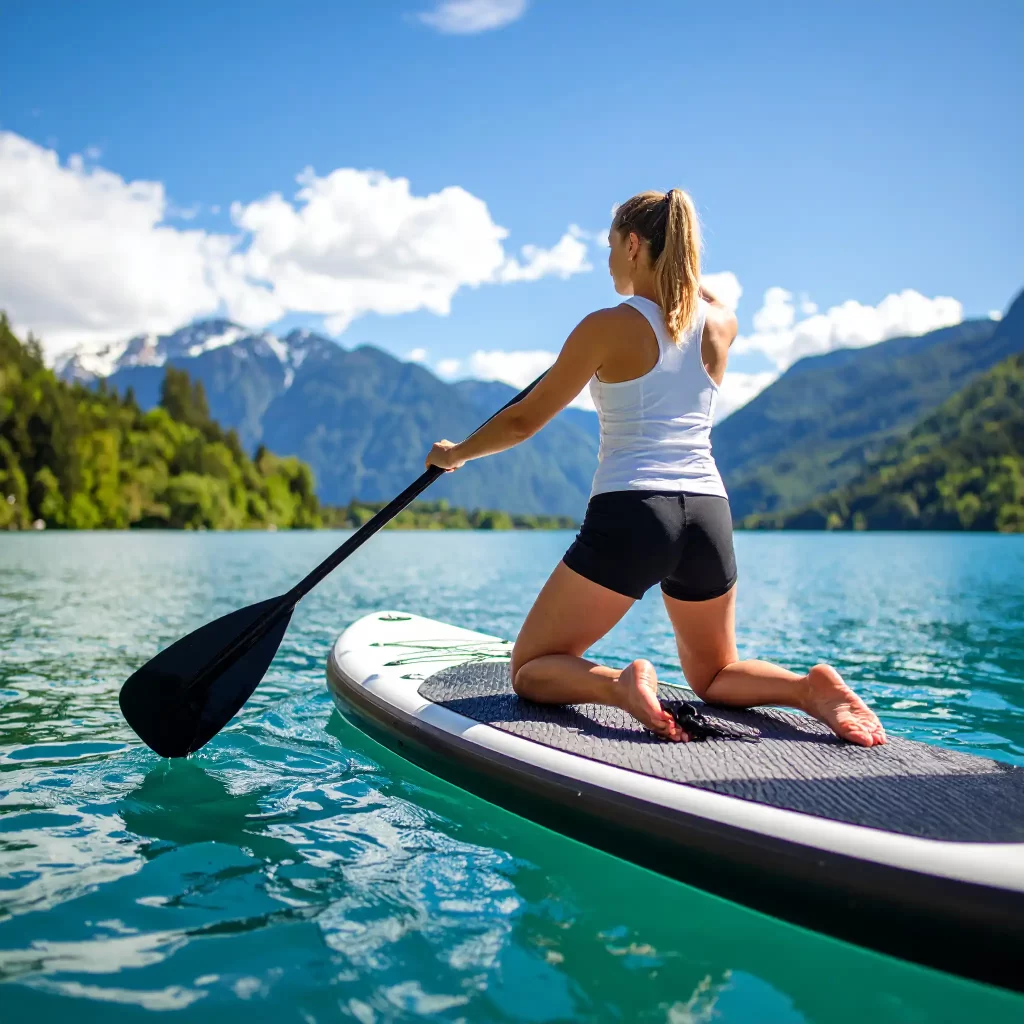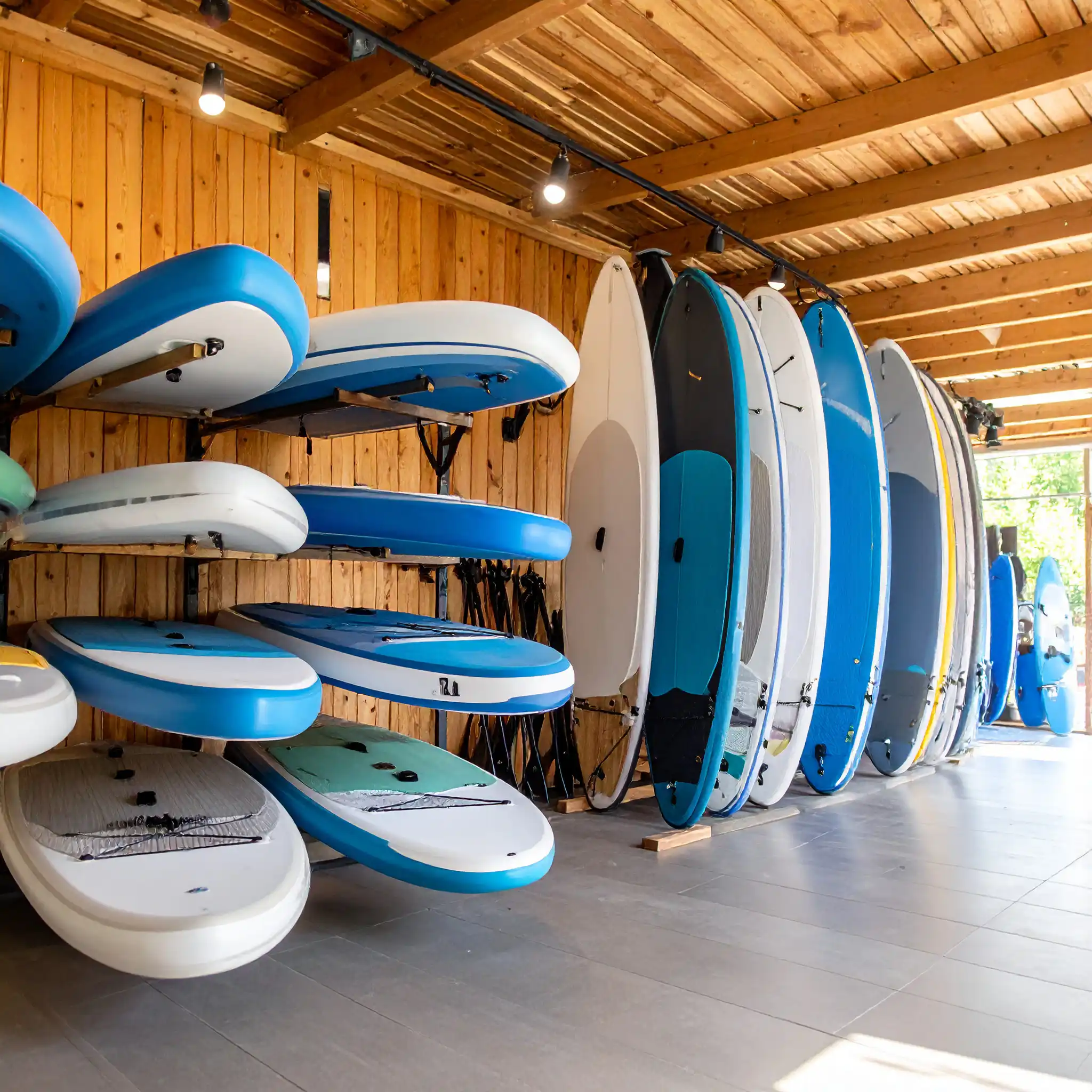Stand-up paddleboarding (SUP) is a fun and accessible way to enjoy the water, but choosing your first board can be confusing with so many options available. This guide will help you make an informed decision and get started with confidence.
1. Decide How You’ll Use Your SUP
Think about where and how you plan to paddle, as different activities require different types of boards:
- Casual paddling: All-around SUP
- Touring/fitness: Touring SUP (longer, pointed nose)
- SUP surfing: Surf-style SUP (shorter, more maneuverable)
- Yoga: Wide, stable all-around SUP
- Fishing/adventure: High-volume, stable SUP
For most beginners, an all-around SUP is the best choice for versatility and stability.
2. Board Shapes: Planing vs. Displacement Hull
- Planing Hull (rounded nose): Stable, easy to turn, and forgiving—ideal for beginners.
- Displacement Hull (pointed nose): Tracks straighter and faster, but requires better balance—best for touring or fitness paddling.
Beginners should start with a planing hull for maximum stability.
3. Sizing: Length, Width, and Thickness
- Length:
- Under 10’(or 3.05meters): Kids or surf SUPs
- 10’–11’6” (3.05–3.5 meters): Best for all-around paddling and beginners
- 12’+ (3.66+ meters) : Touring boards for speed and distance
- Width:
- Under 30” (Under 76 cm) : Less stable, faster—better for advanced paddlers
- 30”–34” (76–86 cm) : Good balance of stability and performance for most beginners
- 34”+ (86+ cm) : Extra stability for larger paddlers or yoga
- Thickness:
- Most inflatables are 6” (15cm) thick for rigidity and volume
Wider boards are more stable, which is helpful for beginners.

4. Inflatable vs. Hard Boards
Inflatable SUPs:
- Easy to store and transport
- Durable and comfortable
- Great for travel and adventure
Hard (Epoxy) SUPs:
- Better for performance and speed
- Require more storage and are heavier
- More vulnerable to dings
Most beginners prefer inflatables for their convenience and durability.
5. Volume and Weight Capacity
Check the manufacturer’s weight capacity and choose a board that supports about 10–15 kg (20–30 lbs) more than your body weight, especially if you plan to carry gear.
- Lighter paddlers: 150–200 liters
- Average paddlers: 200–250 liters
- Larger paddlers + gear: 250–350+ liters
6. Key Features to Look For
- Bungee tie-downs: For securing bags or shoes
- D-rings: For attaching seats or accessories
- Deck pad: Non-slip surface for comfort
- Handles: For easy carrying
- Fin setup: Single fins for speed, 2+1 for maneuverability
7. Budgeting
- Entry-level inflatable SUP: $400–$700
- Mid-range: $700–$1,200
- High-end: $1,200+
Don’t forget to budget for a paddle, leash, PFD (personal flotation device), and pump if they’re not included.
8. Final Tips for First-Time Buyers
- Try before you buy if possible—many shops offer demos.
- Read reviews and check for warranties (some brands offer up to 5 years).
- Avoid very cheap boards—they may not last more than a season.
- Make sure your kit includes all essentials: paddle, leash, fins, and a repair kit.
Buying your first SUP is about matching your needs, skill level, and budget. Focus on stability, quality, and features that suit your paddling plans, and you’ll be ready for a great start on the water.
